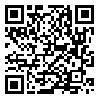Volume 33, Issue 225 (10-2023)
J Mazandaran Univ Med Sci 2023, 33(225): 162-173 |
Back to browse issues page
Download citation:
BibTeX | RIS | EndNote | Medlars | ProCite | Reference Manager | RefWorks
Send citation to:



BibTeX | RIS | EndNote | Medlars | ProCite | Reference Manager | RefWorks
Send citation to:
Dehghan S, Andarvazh M R, Hosseinnataj A, Sajedi M, Mortezazadeh F. Comparison of Face-to-Face and Virtual Education: The Perspective of Students at Mazandaran University of Medical Sciences. J Mazandaran Univ Med Sci 2023; 33 (225) :162-173
URL: http://jmums.mazums.ac.ir/article-1-18844-en.html
URL: http://jmums.mazums.ac.ir/article-1-18844-en.html
Samaneh Dehghan 

 , Mohammad Reza Andarvazh
, Mohammad Reza Andarvazh 

 , Abolfazl Hosseinnataj
, Abolfazl Hosseinnataj 

 , Maryam Sajedi
, Maryam Sajedi 

 , Fatemeh Mortezazadeh
, Fatemeh Mortezazadeh 




 , Mohammad Reza Andarvazh
, Mohammad Reza Andarvazh 

 , Abolfazl Hosseinnataj
, Abolfazl Hosseinnataj 

 , Maryam Sajedi
, Maryam Sajedi 

 , Fatemeh Mortezazadeh
, Fatemeh Mortezazadeh 


Abstract: (2416 Views)
Background and purpose: Given the importance of virtual education, either on its own or in conjunction with face-to-face education, the present study aimed to compare face-to-face and virtual education from the perspective of students of Mazandaran University of Medical Sciences along with investigating the factors affecting the effectiveness of these two educational methods in 2022.
Materials and methods: In this cross-sectional analytical study, the opinions of students regarding the quality of face-to-face and virtual education were investigated. To compare the average scores, we used independent t-tests and analysis of variance (ANOVA). Moreover, the Pearson correlation test and linear regression were used to investigate the relationship between the teaching method and also the scores of face-to-face and virtual educations with quantitative independent variables, respectively. All analyses were performed using SPSS V22.
Results: According to the results, the total average scores for face-to-face and virtual education were 68.65±14.65 and 55.90±17.39, respectively. Employment status, faculty, the number of face-to-face semesters, and the skill level in using equipment had a significant relationship with face-to-face education score. Also, marital status and the number of face-to-face semesters were significantly associated with the virtual education score (P<0.05).
Conclusion: In this study, the average scores obtained by students in face-to-face education were higher compared to the scores obtained in virtual education. Due to the possibility of any emergency situation and disruption in face-to-face education at universities and educational institutions, it is expected to improve the quality of virtual education through a well-planned educational system.
Materials and methods: In this cross-sectional analytical study, the opinions of students regarding the quality of face-to-face and virtual education were investigated. To compare the average scores, we used independent t-tests and analysis of variance (ANOVA). Moreover, the Pearson correlation test and linear regression were used to investigate the relationship between the teaching method and also the scores of face-to-face and virtual educations with quantitative independent variables, respectively. All analyses were performed using SPSS V22.
Results: According to the results, the total average scores for face-to-face and virtual education were 68.65±14.65 and 55.90±17.39, respectively. Employment status, faculty, the number of face-to-face semesters, and the skill level in using equipment had a significant relationship with face-to-face education score. Also, marital status and the number of face-to-face semesters were significantly associated with the virtual education score (P<0.05).
Conclusion: In this study, the average scores obtained by students in face-to-face education were higher compared to the scores obtained in virtual education. Due to the possibility of any emergency situation and disruption in face-to-face education at universities and educational institutions, it is expected to improve the quality of virtual education through a well-planned educational system.
Keywords: virtual education, face-to-face education, student, Mazandaran University of Medical Sciences
Type of Study: Research(Original) |
Subject:
medical education
Send email to the article author
| Rights and permissions | |
 |
This work is licensed under a Creative Commons Attribution-NonCommercial 4.0 International License. |




